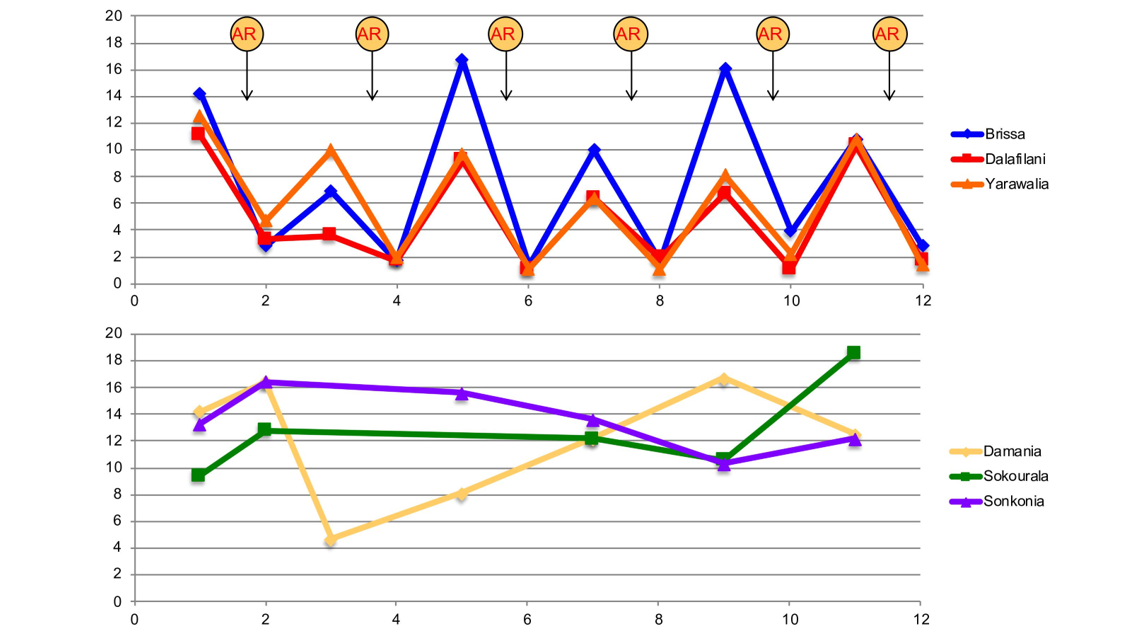Rodent control experiment
For 6 consecutive years (2013 to 2019), we performed an annual rodent elimination by placing rodenticide in 3 villages and measuring rodent abundances. Simultaneously, we monitored the same outcome in 3 different villages without rodent elimination. This dual monitoring allowed us to evaluate the long-term impact of such an approach. We found the effect to be strong but short-lived: rodents re-invaded houses within 2-3 months after elimination, leading to a similar abundance one year after elimination.

There are several reasons for the return of rodents after the end of the elimination:
- the fertility of this species, whose mean litter size is 9.2;
- the survival of a few animals in the fields surrounding the houses, which allows recolonization of the human habitat;
- several closed houses which we were unable to enter and deposit rodenticide baits, and which may have served as shelters from where the rodents could recolonize surrounding houses;
- very attractive foods storage available for rodents in the houses;
- the porosity of walls and roofs, allowing rodents to enter houses very easily;
- the low prevalence of domestic predators, such as cats and dogs.
We concluded that once-yearly rodent elimination was not sufficient to maintain a low abundance of the M. natalensis reservoir. We therefore developed a modelling approach to investigate the efficiency of a rodent control.
Related key publications
Rodent control to fight Lassa fever: evaluation and lessons learned from a 4-year study in Upper Guinea
- Mari Saez A, Cherif Haidara M, Camara A, Kourouma F, Sage M, Magassouba N, Fichet-Calvet E
- PLoS Negl Trop Dis. 2018 Nov 6;12(11):e0006829. doi: 10.1371/journal.pntd.0006829
Evaluation of rodent control to fight Lassa fever based on field data and mathematical modelling
- Mariën J, Borremans B, Kourouma F, Baforday J, Rieger T, Günther S, Magassouba N, Leirs H, Fichet-Calvet E
- Emerg Microbes Infect. 2019;8(1):640-649. doi: 10.1080/22221751.2019.1605846









